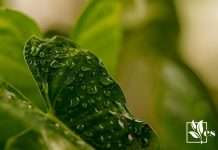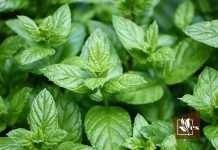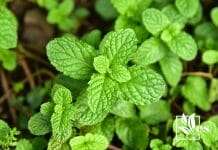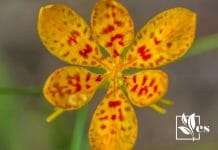 The Chinese Perfume Plant, also known as Aglaia Odorata of the Meliaceae family, is a scented Chinese flowering tree. Due to the shape and scent of its flowers, it is also known by other names like Chinese Rice Flower or Mock Lemon Plant.
The Chinese Perfume Plant, also known as Aglaia Odorata of the Meliaceae family, is a scented Chinese flowering tree. Due to the shape and scent of its flowers, it is also known by other names like Chinese Rice Flower or Mock Lemon Plant.
The Aglaia genus plant’s delicate and fresh fragrance makes it a favorite among indoor plant enthusiasts. In this article, we will be discussing how beginners can easily care for these exotic houseplants.
Soon enough, you will enjoy a fresh lemony scent wafting into your room from the garden.
JUMP TO TOPIC
What Is a Chinese Perfume Plant?
The Chinese Perfume Plant belongs to the Meliaceae plant family, and it is native to the Southeastern region of China. Still, it is also commonly found in Cambodia, Taiwan, Thailand, and Vietnam.
In Chinese culture, the plant is linked with wealth and prosperity, and during Chinese New Year, many families decorate this plant with good luck charms and other trinkets.
In the wild, the Chinese Perfume Tree is known to grow up to 16-20 feet tall, but as indoor plants, they only grow up to 6.5 feet in height.
The leaves of the perfume plant grow on stalks in a feather-like arrangement. Each glossy leaf is anywhere between 2-5 inches long and has a light green color.
The flowers initially start as tiny yet fragrant little buds that look like grains of rice strewn among the leaves. They produce a sweet, citrusy smell during the day, which can even be smelled from a distance, but they don’t produce any scent at night.
Once mature, the red and yellow petals of the Perfume Plant resemble butterfly wings. Even better, these flowers bloom throughout the year so that their beautiful appearance and sweet smell can be enjoyed all year long.
Chinese Perfume Plant Care: The Comprehensive Guide
This perennial shrub makes for a great house plant because it grows easily without too much maintenance. Hence, it’s the perfect indoor plant for a busy person who cannot spend too much time daily working in the garden.
Below, we present the complete Chinese Perfume Plant care guide, which has all the tips and tricks needed to grow healthy Chinese Rice Flowers at home.
We discuss all the growth requirements and tell you how to deal with any issues affecting your plant.
 Water Requirements
Water Requirements
The good news is that this plant is quite hardy and does not need a lot of care. You don’t even need to water it every day. Just give it a good watering once a week, and that should be enough to satisfy the Perfume Plant’s water requirements. If you water it more than once a week, you risk overwatering, and that is the quickest way to kill a plant.
Overwatering causes the soil to become waterlogged and reduces the circulation of oxygen around the roots. The extra water also becomes a breeding ground for all sorts of bacteria and fungi that eat away the plant’s roots. If that happens, there is no way that the Perfume Plant will survive.
A good strategy to avoid stagnant water collecting at the bottom of the pot is to choose one with holes at the bottom through which all the extra water can be drained and thrown away.
Another good way of avoiding overwatering your plant is to check the soil beforehand. Push your finger into the soil and check its dampness level. Only water the plant if the soil is dry to the touch and you can use tap water as well.
Meanwhile, you will notice that the leaves are falling off the plant if you are underwatering it. In such a situation, just increase the water quantity a little, and that should fix the leaf dropping.
 Light Requirements
Light Requirements
Mock Lemon Plants prefer bright, well-lit conditions. So place these plants in a spot where they will receive plenty of sun. Ideally, they should be grown outside.

However, if you are growing them indoors, place them near a window that receives a fair amount of sunlight. Indeed, lots of sunshine will make the plant bloom better and produce more strongly scented flowers.
 Soil Requirements
Soil Requirements
A well-draining soil works best for Chinese Rice Flowers because it reduces the risk of the roots rotting from stagnant water. So use a soil mix for these plants that drains well and stays relatively dry.
You can use a little bit of perlite to maintain good oxygen circulation and prevent the soil from accumulating too much moisture. So, a soil mix of peat, sand, and perlite might be a good option, while cactus mix can be used as an alternative if needed.
Chinese Perfume Plants also prefer slightly acidic soil. The pH should be around 5.5 to 7, which indicates a good balance. You can add a few pine needles as compost because they are known to increase the soil’s acidity.
 Fertilizer Requirements
Fertilizer Requirements
Fertilizer is essential, especially during the growing season. A good water-soluble fertilizer applied every two weeks should do the trick.
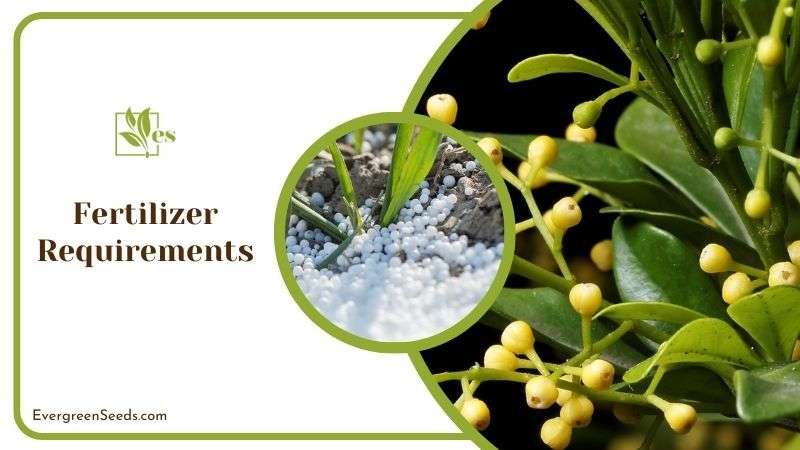
Use a flowering inducer to get yourself a lovely Chinese Perfume Tree with fragrant yellow flowers during the flowering season.
 Humidity Requirements
Humidity Requirements
Chinese Rice Flowers can grow in a range of humidity levels. They can even survive in low humidity, although it is much better to place them in a spot with a high humidity level so that they can grow strong and tall.
To boost the level of humidity, lightly spray the leaves. You could alternatively install a humidifier which is a recommended strategy, especially if you are growing your plant indoors.

Growing these shrubs in clay pots is also a good idea because the clay traps moisture, thereby keeping your tree nice and moist.
 Temperature Requirements
Temperature Requirements
Although Mock Lemon Plants prefer warmer climates, they are still strong enough to withstand temperatures as low as 14 degrees Fahrenheit.

However, like we just mentioned above, it is much better to keep these plants in higher temperatures. So, if you live in an area that experiences a lot of cold weather we suggest that you grow your Perfume Plant in a room with the heating turned up high.
Propagation
The most straightforward way to propagate these plants is through the stem cutting method.
Below, we have outlined all the information regarding propagation in these easy to follow steps:
- Select a healthy stem on a mature Chinese Perfume Plant that has plenty of flowers
- Sanitize a pair of garden shears
- Make a small cut on the selected stem using the shears. Be careful not to cut through the branch.
- Keep the cut open by wedging a bit of plastic in the opening so that it does not heal and close
- Soak some peat moss in a little water
- Place the damp moss in the cut after removing the plastic
- If the moss does not stay in place, you can secure it with a bit of tape
- After a few weeks, tiny roots should start developing
- Once rooting has taken place, cut the whole branch and place it in a separate pot so that the baby roots can take hold and grow.
- That’s it! Soon you will have your own tiny Chinese Tree.
You can also propagate these plants using the air layering method or through seed propagation. However, we strongly recommend the stem cutting method because it is the easiest and most fool-proof strategy.
 Pruning Guidelines
Pruning Guidelines
The Mock Lemon Plants do not require you to spend too much time pruning them. However, there are a few pruning guidelines that you can follow to give your plant some extra care.
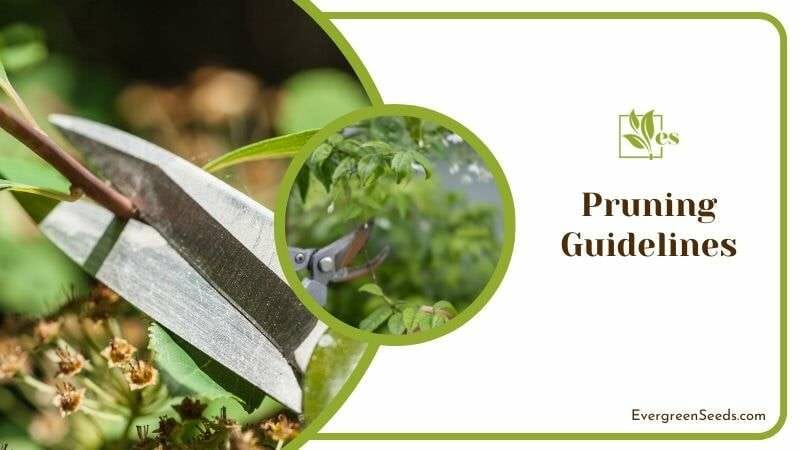
Firstly, pruning can help you achieve the desired plant shape. If you want your Perfume Plant to have a fuller, more shrub-like appearance, then periodically removing the top leaf shoots can help you get that look.
Secondly, to keep the plant growing healthily, we recommended removing all the dried flower stalks once the flowering season is over.
– Repotting
Chinese Rice Flower plants are quick growers, so we recommend that these plants be repotted every two years. As a plant grows, its roots need more and more space to branch out and extract more nutrients from the soil to feed the growing plant.

Therefore, as your plant grows over the years, make sure that you don’t forget to transplant it into a bigger pot so that the roots have more room for which to grow. If you see cracks in the pot with the roots sticking out, this is a strong indicator that the plant needs to be repotted immediately.
Problems
Generally speaking, Chinese Perfume Plants are quite resilient and can thrive in a range of different environments. They are also usually immune to most plant diseases and pest infestations. However, there are a few issues that can occur, especially if it is your first time growing this species. So, to make things easier for you, we have discussed some of the most common problems as well as ways to resolve these issues.
Like we just said earlier, these plants are generally resistant to pests and bugs. However, they can occasionally come under attack by aphids and spider mites. A quick way of dealing with such best is to spray the plant with a diluted mixture of oil and water. The oil kills the bugs instantly, and then all you need to do is wipe the oil and dead bugs off the leaves.
Another common problem that you might have to deal with is wilted or flaccid leaves. This is a sign that you are underwatering your plant or that you have placed it under very strong sunlight. To revive the droopy leaves, increase the amount of water slightly when you water the plant once a week. You might also want to shift the plant to a spot where the sunlight is just enough and not so much that it scorches the plant.
Yellowing leaves are another problem that can ruin the appearance of your plant. To address this issue, try adjusting the water level. If you notice that the soil is too dry, increase the water supply. On the other hand, if the soil is too moist, decrease the water.
Once you get the water right, the leaves should stop turning yellow. However, if the problem persists, you can try to increase the nitrogen content in the fertilizer that you give to this plant.
Lastly, your plant might not produce a lot of buds or flowers. To resolve this issue, make sure that the plant gets an adequate amount of fertilizer during the flowering season. We recommend fertilizing the Chinese perfume plant at least once or twice every month to get the maximum number of flowers.
Final note:
Now you are fully equipped to deal with any situation when it comes to growing Chine Perfume Plants. With the above guidelines, you can easily have these beautiful flowers in your garden.


